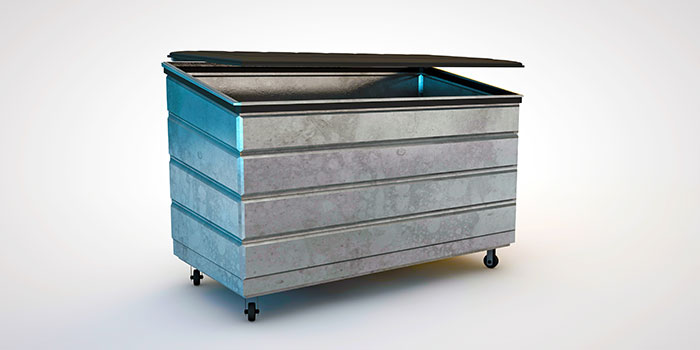Ship That Print Job to the Dumpster!

An international beer importer produced a sophisticated display for a holiday promotion. After much time and expense, completed units were shipped to distributors across the country for installation at various off-premise accounts including grocery, specialty and c-store locations. Lacking a national sales force themselves, the marketing folks assumed that the distributor’s salespeople would gladly install the displays at location. After all, the more product they sell, the greater profit would be for all. The salespeople didn’t agree and most displays were never placed.
Another marketer decided to take a subtle approach. They printed a collateral piece featuring lifestyle messaging but the outside was designed to look like a foreign passport. The idea was to seed these pieces throughout New York, where consumers would pick them up out of curiosity and read them. Unfortunately, they didn’t realize until after printing 500,000 pieces that they had no efficient way to efficiently distribute them. The program gathered dust in a fulfillment warehouse.
In both cases, seemingly valid promotional concepts were dead on arrival because no thought was given to execution, to how these items would be placed or distributed to the field. As a result, all of the time, thought and expense that went into developing and producing these items was largely wasted. They could have saved everyone trouble by shipping them directly to a dumpster, because that’s where they ended up.
Countless times I’ve seen examples where no thought was given to the end use of printed materials. That’s a shame because ultimately, the success of any program is determined by how well it is executed from start through completion. Breakthrough creative, sterling copy and flawless reproduction mean nothing if the message doesn’t get into the hands of the consumer.
So, in the interests of improving print marketing everywhere, keep these 5 “W’s” in mind when developing a printed promotion or campaign:
1. Who is responsible for executing the program and getting it in front of the consumer? That individual or team must carefully review the distribution channels and confirm all parties know what’s expected and are onboard with it. Since conditions often change, they should be invested with the authority to quickly adjust when required.
2. What are you asking them to do? Some printed materials require placement or installation (i.e. POS displays) by field sales. Many regard this as a distraction, so make sure they are available and agreeable to doing what’s required and provide incentives when possible. When possible, engineer displays to simplify installation.
3. When are materials due? Time sensitive materials delivered late are useless so establish a production schedule that will comfortably meet the deadline.
4. Where will materials be displayed? Be sure to have permission to place materials before producing them. Many supermarket and retail chains have adopted clean store policies that limit promotional materials and displays. Also confirm that printing method and substrates are suitable for the conditions. Paper is usually inappropriate for long-term use outdoors or in a market’s refrigerated case.
5. Why? Printed materials can inform, persuade and motivate so consider how the user should respond to it. Coupons must be easy to detach and use, offers feature a clear and immediate call to action and direct response include appropriate feedback mechanisms.
Proper execution planning will assure that your printed materials don’t go en masse to the dumpster. Instead, they’ll be placed individually in the recycling bin, long after they’ve served their intended purpose.

Leave a Reply